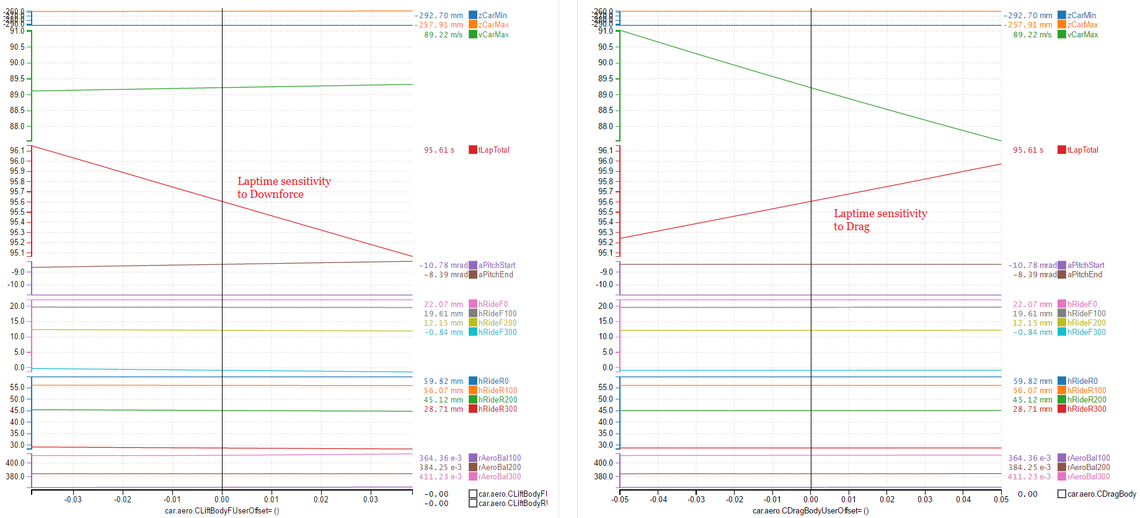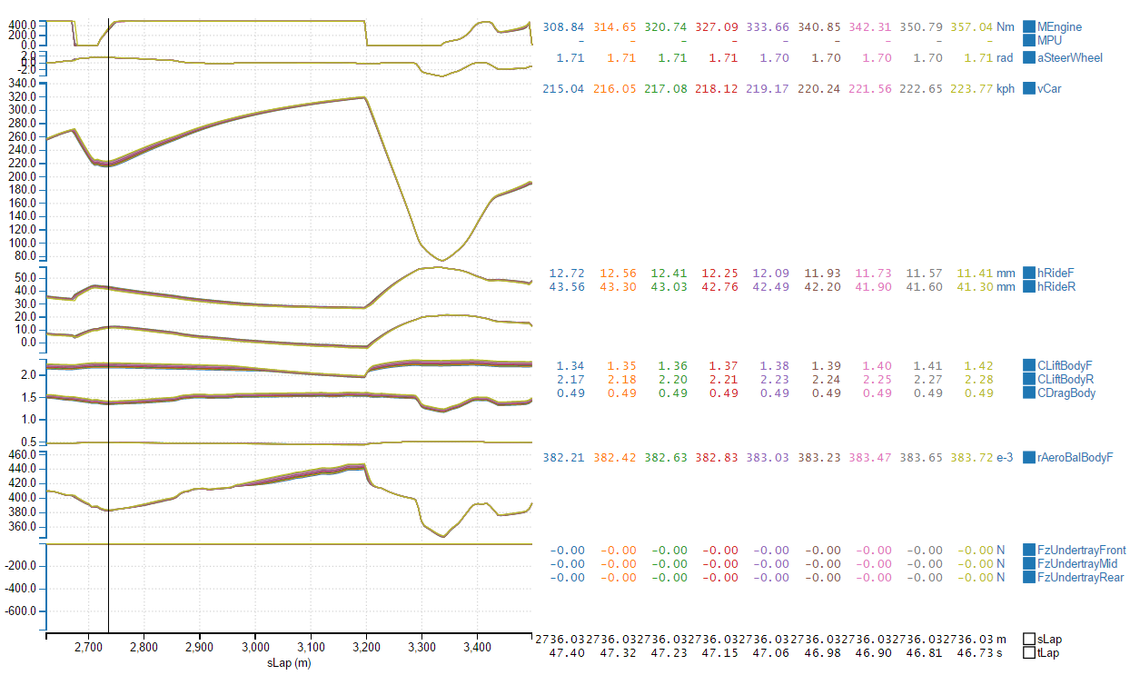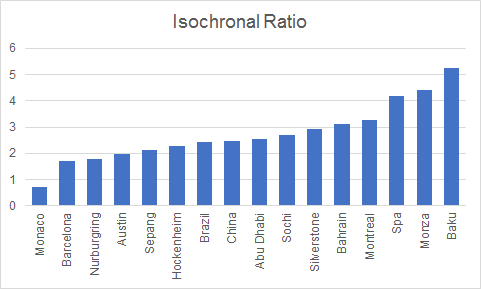Aerodynamic Upgrades Facilitated: Isochronal Ratio
JANUARY 18, 2017
It is a mixed blessing when you hand a child an iPad on a long car journey. On one hand, you know that they will be so captivated by the slickness of the technology that you can guarantee a hassle-free journey. Conversely, you can’t help but feel that they are missing out by not interacting with the outside world. This is how I can best describe the experience of being handed a Canopy Simulations logon. Every device that I own with a copy of Google Chrome is now transformed into a state of the art motorsports simulation portal. We have a number of articles that have focused on how to get up and running 1) run a study 2) parameterising your car and 3) match telemetry data. The intention of this article is to understand how we can use the output to influence design decisions.
The isochronal ratio assists motorsports teams with the selection of aerodynamic components. It provides them with a really quick reference to help understand some of the trade offs in car design; it is the Lift/Drag ratio for a specific car and circuit combination which when added to the car would leave the laptime unchanged. For example, if we had an isochronal ratio of 3, and we had a new part which added 3 points of CLT (total downforce) but at the cost of 1 point of CD (drag), we know that it would not make the car any quicker at this circuit. We would then have to consider all the secondary factors from adding this component: tyre wear, fuel consumption, ride heights, overtaking strategy. This makes our job more fun; we move on to the next level of decision making.
If the isochronal ratio is so useful, then why aren’t we all using it? The process of finding the isochronal ratio involves sweeping through aerobalance neutral downforce and drag, running a laptime simulation with each. This has typically been a long and laborious process, I would expect to set a few laptime simulations off running, go for lunch and return to find that my machine has thrown an error. Canopy really trivializes the process; after a preliminary look, I fired off the sweep for all circuits to the cloud. The whole process completed in well under an hour! Not only do we now have some really useful numbers, but when they need updating for a regulation change or a new circuit gets added to the calendar, we modify the car or circuit and just re-run the exploration saved with our previous results.
When we look through the results in Canopy, we can see the clear laptime trend (Figure 1). It is reassuring to see at a quick glance that other metrics haven’t changed significantly over the exploration and that our results are linear in the region examined. Selecting the downforce scan results and drawing a standard overlay, Figure 2 shows us the effect on Apex speed through Barcelona T9. Our simulation results appear to be of high quality.

Figure 1: Sensitivities to CLT and CD

Figure 2: Apex speed through Barcelona T9
Now we can compare results for all circuits as shown in Figure 3. At Monaco our sensitivity to drag is very low because the circuit has a low characteristic speed with many tight corners and few long straights, carrying good apex speed here is more important than reducing drag. A team with this car would fit all the downforce that they could find and provided that each additional point of downforce came with a penalty of less than one point of drag, the laptime should improve. At the other extreme we notice that Monza with its long straights has now been displaced by Baku. With a straight of 2.2km a team with this car would know to only fit the most aerodynamically efficient components.

Figure 3: Circuits ranked by Isochronal Ratio
Now that we can see the picture for the whole season, we can set targets for aerodynamic development for specific races and understand more about the trade offs that we make when developing the car. Since the isochronal ratio is specific to a car/circuit combination it is handy to re-compute this as your car evolves. For example if we remove downforce from the Barcelona car our isochronal ratio drops from 1.7 to 1.4. Canopy provides teams with the tool necessary to keep on top of their simulation requirements in a competitive racing environment.